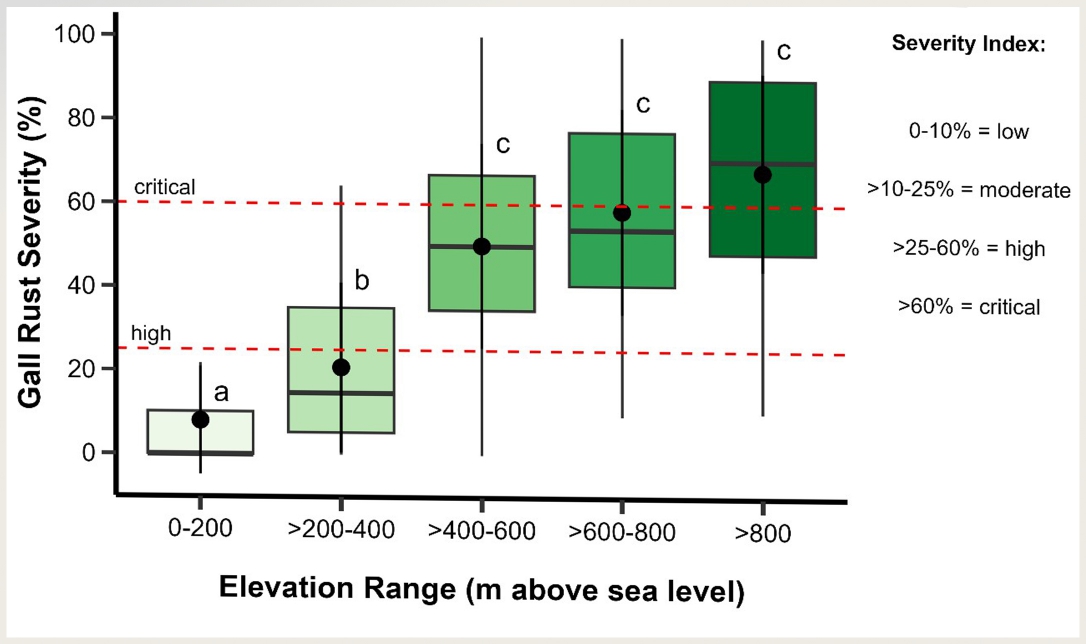Strategies for falcata (Falcataria falcata (L.) Greuter and R.Rankin) farmers to mitigate gall rust severity across elevations
DOI:
https://doi.org/10.59120/drj.v15i3.241Keywords:
Falcata plantation, gall rust disease, plantation management, industrial tree plantation, Mindanao, PhilippinesAbstract
The extent of gall rust severity in Falcata plantations across various elevations and locations in the country is insufficiently documented, posing challenges for developing an integrated disease management strategy. This study aimed to assess the conditions favorable for gall rust severity in Falcata plantations at different elevations in Mindanao. Our survey revealed that gall rust severity is significantly higher at elevations exceeding 400 m above sea level (asl), with potential yield losses estimated between 23% and 52% of the total log volume per hectare. Factors contributing to increased severity, regardless of elevation, include low stand density (<1000 trees/ha), extended distances from natural vegetation (>1000 m), low understorey species diversity, and low average temperatures (<24°C). These factors interact significantly with elevation, as higher severity was observed in plantations with greater understorey vegetation diversity and elevated temperatures (>24°C), particularly at elevations over 600 m (asl). Based on our findings, it is recommended to avoid planting Falcata in areas with elevations exceeding 400 m (asl). However, if planting at higher elevations is unavoidable, adequate tree spacing (3 m x 3 m or 3 m x 4 m) should be maintained to achieve a moderate stand density (1000-1500 trees/ha). This practice can help regulate air circulation within the plantation, mitigate pathogen spread, and control understory vegetation growth and temperature impacts. Additionally, establishing and maintaining native vegetation or forest within 1000 m around Falcata plantations is advisable to create a protective buffer zone, thereby reducing gall rust severity.
Downloads

Downloads
Published
Issue
Section
License
Copyright (c) 2024 Adrian M. Tulod, Jupiter V. Casas, Mark Jun A. Rojo, Rico A. Marin, Bryan Allan M. Talisay, Eric N. Bruno, Nympha E. Branzuela, Edgar B. Solis, Sheryl S. Bayang, Joan S. Gilbero, Mhar O. Loquez, Espie M. Praca, Dennis M. Gilbero

This work is licensed under a Creative Commons Attribution-NonCommercial 4.0 International License.
DRJ is an open-access journal and the article's license is CC-BY-NC. This license allows others to distribute, remix, tweak, and build on the author's work, as long as they give credit to the original work. Authors retain the copyright and grant the journal/publisher non-exclusive publishing rights with the work simultaneously licensed under a https://creativecommons.org/licenses/by-nc/4.0/.









